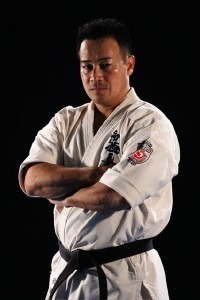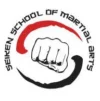Seiken Martial Arts History
Learn about the history of our School and Style of Karate

Sosai Mas Oyama
Masutatsu (Mas) Oyama was born Yong-I Choi on the 27th July 1923 in a village in Southern Korea not far from the city of Gunsan. As an infant Mas Oyama was sent to live in Manchuria, Southern China on his sisters’ farm. This is where he began his Martial Arts training. When he was about 9 years old he began studying Southern Chinese Kempo with Mr Yi who was working on the farm. Upon returning to Korea at twelve he continued his training, this time in Korean Kempo.
In 1938 during the Sino-Japanese war Mas Oyama travelled to Japan to train to become a pilot. Attending aviation school in a foreign country did not work out well for him and he was forced to abandon his desire to survive basic demands of life.
Oyama was determined to find success in some field of study. He continued his Martial Arts training now in Judo and Boxing. During this time he also discovered Okinowan Karate and began training at the Takushoku University under Ginchin Funakoshi. By 17 he was a 2nd Dan and by 20 a 4th Dan when he entered the Japanese Imperial Army. At this time he continued studying Judo and by the time he stopped after 4 years he had gained a 4th Dan.
The defeat of the Japanese Army and the turmoil of the times affected Oyama deeply and he was thrown into much personal turmoil and confusion.
In 1952 Oyama travelled to the US to continue demonstrating his Karate. There he fought challenges from any one who wanted to fight him, 270 in total. He fought professional boxers, wrestlers and anyone else who took the challenge. Oyama won every match and crushed most opponents with one punch in just a few seconds, no fight went longer than 3 minutes. Mas Oyama became known as Godhand, a living manifestation of the Japanese warrior’s maxim “Ichi geki Hissatsu” or “one strike certain death”.
In 1953 Oyama opened his first Dojo, a grass lot in Mejiro, Tokyo. June 1956 Mas Oyama opened a Dojo in a former Ballet studio and thus marked the true beginning of the Oyama Karate School. This was behind the Rikkyo University and just 500 meters from the current Honbu at Nishi-Ikebukuro.
Oyama was at his peak and training was severe, despite the extremely high drop out rate, over 90%, membership grew rapidly and by 1957 had 700 members.
Oyama continued to travel the world demonstrating his Karate and getting as much exposure to other styles of Martial Arts as he could. He picked the best aspects of each to develop his own Karate. During this time in 1957 he was gored by a Bull during one of his demonstrations. He was able to pull the Bull from himself and snap its horn off with a mighty blow. He was nearly killed and was hospitalised then bed ridden for 6 months. Through sheer force of will Oyama made a full recovery from what would normally have been a fatal wound.
Today several different political factions exist but the Kyokushin Karate as taught by Sosai Mas Oyama is still practiced around the world whatever the particular political association.
Eleven Mottos of Mas Oyama
- The Martial Way begins and ends with courtesy. Therefore, be properly and genuinely courteous at all times.
- Following the Martial Way is like scaling a cliff. Continue upwards without rest. It demands absolute and unflattering devotion to the task at hand.
- Strive to seize the initiative in all things, all the time guarding against actions stemming from selfish animosity or thoughtlessness.
- Even for Martial Artists, the place of money cannot be ignored. Yet one should be careful never to become attached to it.
- The Martial Way is centered in posture. Strive to maintain correct posture at all times.
- The Martial Way begins with one thousand days and is mastered after ten thousand days of training.
- In Martial Arts, introspection begets wisdom. Always see contemplation of your actions as an opportunity to improve.
- The nature and purpose of the Martial Way is universal. All selfish desires should be roasted in the tempering fires of hard training.
- Martial Arts begin with a point and end in a circle. Straight lines stem from this principle.
- The true essence of the Martial Way can only be realized through experience. Knowing this, learn never to fear its demand.
- Always remember: In Martial Arts the rewards of a confident and grateful heart are truly abundant.

